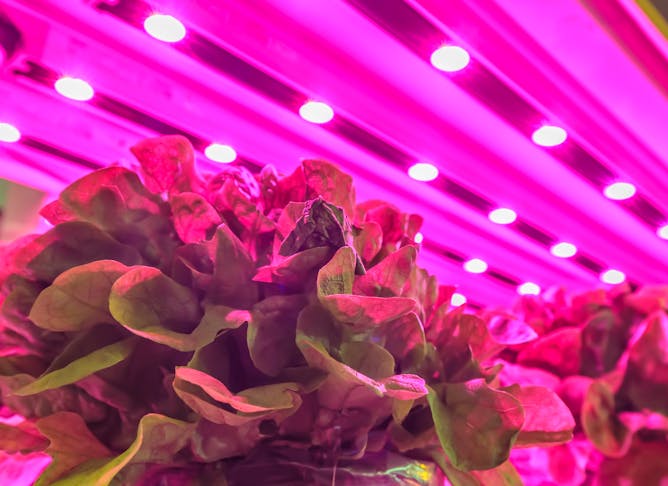 |
A note from...
Maggie Villiger
Senior Science + Technology Editor
|
|
|
Year-round illuminated greenhouses are starting to catch on, especially in places with cold, dark winters that aren’t great for growing crops. Maybe you’ve bought produce or herbs cultivated at one of these “plant factories.” One problem with this kind of closed-environment agriculture is that it takes a lot of energy to replace the light that outdoor plants get from the sun’s rays.
University of Florida horticultural scientist Kevin Folta and his team started wondering if they could tweak the usual cycle of alternating long bright “days” followed by long dark “nights.” By playing around with how long plants received light and darkness, they may have discovered a way to trim the power bills for indoor growers.
Also today: tensions in the Strait of Hormuz, explaining a sentence of life plus 419 years and “Avengers: Endgame” is good – but not that good.
|
Top story
|

Pulses of light followed by extended dark periods might help make indoor agricultural production more sustainable.
DutchScenery/Shutterstock.com
Kevin M. Folta, University of Florida
Indoor plant factories have high energy costs since LEDs replace the sunlight outdoor plants get for free. Scientists found a way to dial back how much light is needed by breaking it into tiny bursts.
|
|
|
Politics + Society
|
-
Jean Lantz Reisz, University of Southern California
The Trump administration has once again tried to change immigration law, this time enacting severe limits on the rights of asylum-seekers. An immigration law expert says only Congress can do that.
-
Darryl K. Brown, University of Virginia
The US is unique in its criminal punishment policies – as the recent sentencing of neo-Nazi James Fields Jr. demonstrates.
|
|
|
|
|
|
|
|
|
|
Most read on site
|
-
Melissa Michaud Baese-Berk, University of Oregon
Armstrong always insisted that he said, 'That’s one small step for a man.' Yet everyone omits the 'a' when they repeat the quote. A linguist tries to get to the bottom of what happened.
-
Jason Wright, Pennsylvania State University
As more than a million people have indicated plans to partake in a citizen 'raid' on the famed Area 51 to 'see them aliens,' a scholar on the search for extraterrestrial life weighs in on the hype.
-
Frank J. Infurna, Arizona State University
What was once imagined as a time of exploration and reinvention has become marked by financial and emotional strain.
|
|
Today’s chart |
-
  |
Erica Frankenberg
Pennsylvania State University
|
| |
| |
|
|
| |
|
|